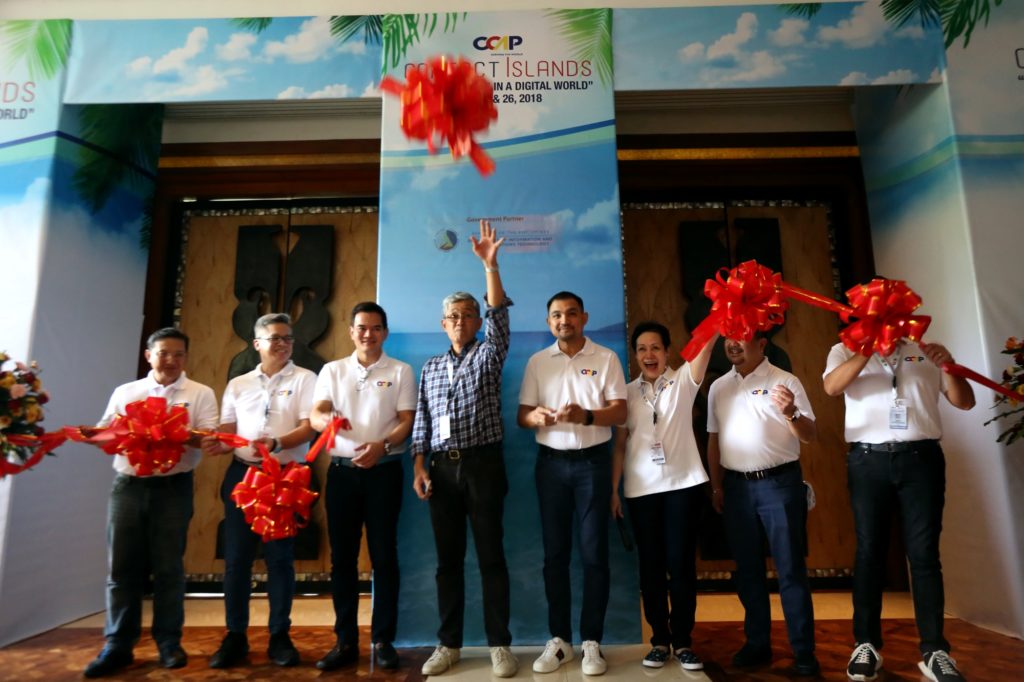
Officials of the Contact Center Association of the Philippines (CCAP) lead the ribbon cutting ceremony signifying the start of the Contact Islands 2018 Conference at the Shangri-la Mactan Resort and Spa on Wednesday./cdn photo/ Junjie Mendoza
The country’s contact center industry is foreseen to contribute $1 billion in revenues this year with the Philippines and particularly Cebu expected to continue to be the biggest source of voice services worldwide.
“We are forecasting another $1 billion in revenues this 2018. That translates to an additional 70,000 more jobs,” Jojo Uligan, Contact Center Association of the Philippines (CCAP) president, said in a press conference on Wednesday (July 25) at the opening of the Contact Islands 2018 Conference at the Shangri-La Mactan Resort and Spa.
Uligan said that companies had been able to start coping with the disruption brought about by technologies like artificial intelligence (AI) and automation.
With this development, Global consulting and research firm, Everest Group, foresees that the country will account for 16 percent to 18 percent of the aggregate outsourced services globally in 2018.
Data from the Everest Group also showed that revenue generated by the local call center sector reached $13 billion in 2017. This is projected to grow this year by 7 to 9 percent.
According to Benedict Hernandez, CCAP board chairman, contact center players in the country had remained bullish about the industry’s financial performance.
Hernandez said that current figures were in line with the IT and Business Process Association of the Philippines (IBPAP) roadmap which showed that the call center sector’s revenue had been projected to rise by 8.2 percent or a compounded annual growth of $20.4 billion between 2016 and 2022.
“We are on track with our roadmap given the increase in the growth and market share globally. We continue to be, after a number of years, the number one destination for contact centers around the world,” Hernandez said.
“Now on our third year of industry roadmap, the contact center community remains consistent with its forecast of growth given that focus on high complex type of work,” added Uligan.
Also, based on CCAP’s recent survey among its member-companies, mid-level and high-level skills now comprise about 55 percent and 30 percent of jobs in the voice space, respectively.
Hernandez said that local call center companies had been able to capitalize on trends and the disruptive and transformative impact of digital technologies.
He said that companies had been proactively investing in these digital capabilities including analytics, automation and AI in order to upskill their own workforce.
These investments, he said, had resulted in the need and the creation of more mid-level and high-level jobs among companies wherein employees had been able to move up to more complex problem-solving activities instead of the basic transactional activities that could be taken over by technology.
According to H. Karthik, a partner from the Everest Group, there have been three global trends in the global contact center industry — increasing use of analytics, shift towards high-value added work; and automation of transactional jobs.
“But automation is not a threat to the global services industry. It’s an opportunity for leading locations like Philippines to upskill and use their workforce for more high-value added jobs,” he said.
In fact, this is the main theme of this year’s two-day Contact Islands Conference which was opened yesterday. It bears the theme “Leading with CX in a Digital World.”
The conference delves on the dynamics of empowered customers, hybrid workforce, jobs of the future, new service delivery models, and other topics.
It also highlights the continued success of the contact center sector, which is a part of the broader business process outsourcing (BPO) industry, from the past years to the present and to the
future.
“The industry has continuously evolved to remain competitive and to grow its market share. All of our indicators were saying that we continue to enjoy this growth,”
Uligan said.
At least 422 delegates from industry players, to government and academe, are joining the conference.